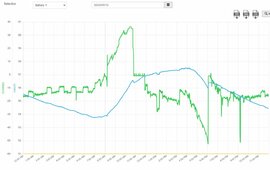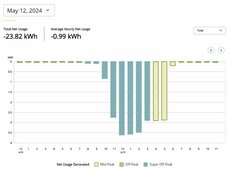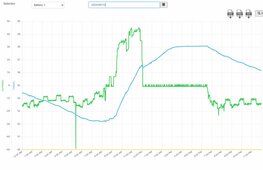Amazon managed to send the correct 16S version of the 100 Balance 1 amp active balancer. And today, I got my extra connectors to make up a "Y" harness. I tested it all by letting it finish balancing my E-Bike batteries. You can set them to balance less than the number of cells they come wired for, BUT.... You still need to connect the highest cell lead to the most positive. And it only stays on for about 1 minute each time until you get it set to the new lower number of cells, and then reboot it. It's a little pain, but I wanted a 16S for when I do LFP cells. The online data makes it sound like it will just work with 8S to 16S with no hassle. But in hind site, I should have just bought a 14S. But I got it working, and I can easily switch it back to 16S mode if needed.
It took most of a day, but it did balance my E-Bike batteries to under 0.02 volts difference from highest to lowest cell. Not bad at all. It stops when all cells are within that 0.02 volts, it won't try to go closer.
So I took one half of the new battery box off line and connected the 100 balance board to it. Oops, the JST connectors are a little different. The side on the cells plugs in just fine, but the side to go back in the BMS is a little too thick and won't go in. I'll have to file it down a little. But for now, I can still open the app and watch it balance the cells. Hmmm. It's not turning on, the LED is just a dim green. Did I wire something wrong? Oh good, the app connected. Here is the monitor screen.
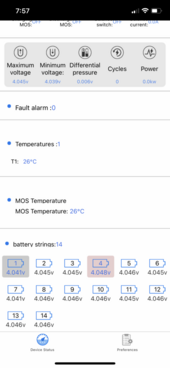
Hmmm, now I see the problem. My newer set of Chevy Bolt cells are balanced to where the highest and lowest cells ar just 0.007 volts apart. The app even flipped to show 0.006 as it froze the screen shot. This balancer won't even try to pull them any closer. Okay, I'll move it to the other half of the battery bank. Plug the upper BMS back in, switch that battery on, and switch off the lower battery. Same issue, my "Y" cable won't fit in the BMS. So once again, I am just connected to the cells. Here is the balancer app on the second half of the cells.
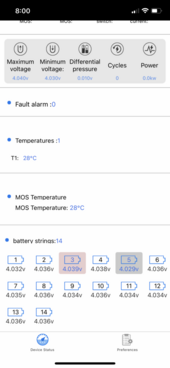
Not quite as tight of a balance at 0.010 volts difference, but that is still half of what it will even try to balance out. So as I pretty much expected, my LG Chevy Bolt cells are very well behaved, and it seems the little 0.060 amp passive balancing is enough for them. I will get the correct hood an get my "Y" cable working properly so I can monitor the cells when I need to. The "Y" cable does work just fine on the E-Bike batteries and BMS units. Those packs need it way more. Hopefully I will actually be able to go for a ride on Sat. I already know I am working Sunday.



